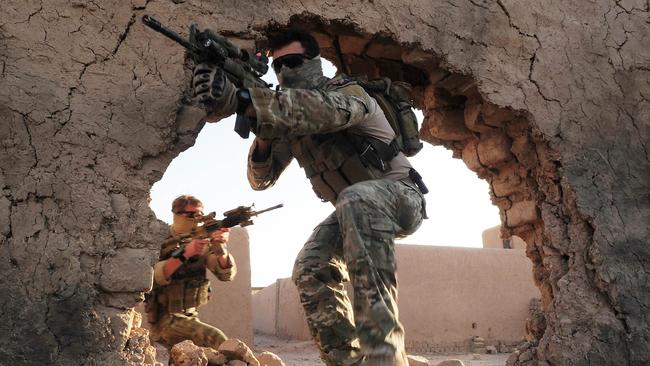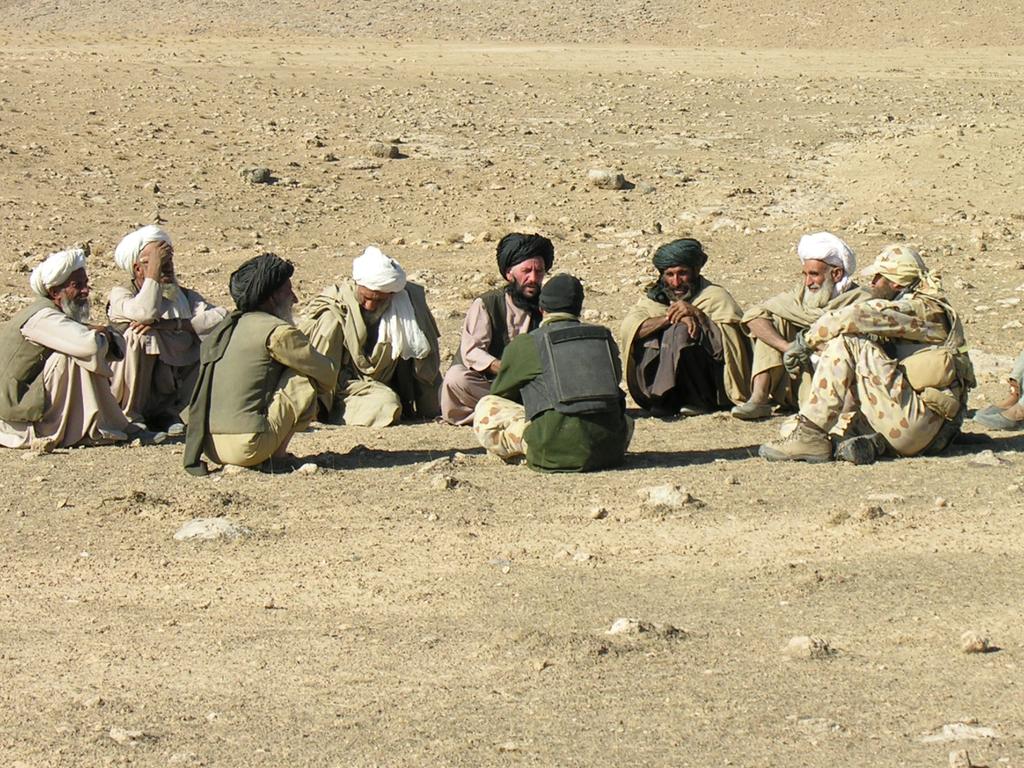Thanks to SASR, we sleep more soundly in our beds

In what has become a white whale of an obsession, the SAS Regiment is under siege. Indeed, it is a hunt that has been going on for years in some form or another. More recently, and complete with its own prosthetic leg, the hunt has been encouraged by a military hierarchy that surely has nailed the gold coin to the mast, enticing all comers. And perhaps, just as in the classic story, eventually, inevitably some will be dragged to the depths of their own pride and envy.
Notwithstanding the outcomes of investigations into war crimes in Afghanistan – my position is on the public record that the allegations are of the gravest nature and must be investigated – the regiment’s integrity is in doubt, and the unit evidently is working hard to right that. My intent here is strictly the defence of SASR, the regiment. To reiterate Sir Peter Cosgrove’s recent comments: “There is baby and there is bathwater here.”
A devout political agnostic, I have been a critic of many politicians in the past. But Peter Dutton’s recent decisions to reinstate the Meritorious Unit Citation and to overrule the “Defence plan to strip (SASR) of its ability to select its own recruits” are excellent ones.
The original decision, a transparent attempt to “rein the unit in”, evidently did not prioritise national capability. As unpalatable as it may be for some, the regiment requires more autonomy, not more centralisation. Retired US Navy admiral Eric Olson, one of the most experienced special operation forces individuals in the world, highlights this exact point. Special operation forces need fewer conventional constraints, to innovate, so the human capability we spend so long finding, selecting and preparing is not stifled or in danger of being misused. We need our long-haired, swaggering, creative SOF operators to be as free as we dare.
It is worth taking a moment to remind ourselves of what special operation forces, or special missions units, are. Our obsession with elite forces dates back before the Persian Immortals. Standing militaries raised such forces for unconventional and unprecedented challenges, later disbanding them on completion of their mission.
Standing special missions units are a relatively new concept, and this brings with it foreseeable tensions with conventional forces and command structures. So, the argument for disbanding special units is understandable; however, this would be a historical perspective and ignores the significant role they do and will play, as the world has changed profoundly. Small, highly trained teams are agile and cause disproportionate effects. Not to mention the psychological impacts on the enemy.

In Afghanistan, for example, we might have done well to keep it as a spec-ops campaign. Rather, it became a conventional occupational conflict, which is more lucrative for some in contrast to the relatively low-cost, high-impact special missions units. Evidently we did not learn from last century that occupation is never a sound strategy in counterinsurgency wars.
Special missions units such as SASR are destination organisations that aim to attract “the best”; it is their business model. Such units identify and select individuals who can physically, mentally, and socially endure more than most. Get-shit-done bricoleurs who together have an ability shapeshift into an anywhere, anytime, anything force. Contemporary examples abound: small, surgical, self-sustaining mountain warfare teams in the hunt for Osama bin Laden; long-range vehicle domination in Iraq’s western deserts; and the high-risk high-seas interdiction of ships under way and deep sea operations. And this is to say nothing of the clandestine capability. They habitually operate inside the chaotic and unconventional grey areas where economics, business, politics, intelligence and conflict collide. Think less Call of Duty and more Nancy Wake, who would be right at home in the “Gratto” (Gratwick Club).
But SASR is more than just the eyes, ears, and surgeon’s hand of our military. The unit offers broader value to the various national defence ecosystems. They are a test bed for capability, training and equipment. They habitually pass on lessons to the broader defence force relating to tactics, techniques, and procedures, both those of friendlies and enemies.
I know of many SAS operators who have taken personal leave to travel, share and train with conventional forces. The regiment also provides guidance in the domains of soldier systems, leadership and human performance. Indeed, in Australia SASR inspires future generations to be the best version of themselves they can be.
The ability to endure sometimes cruel and always austere environments requires a rare combination of traits that are hard to find. To do this, SASR must clearly be allowed to continue to recruit and select the most suitable individuals possible via one of the most coveted selection processes in the world. The decision to sustain SAS selection practises will leave some bristling; indeed many of the unit’s detractors lurk within the sub-units of Special Operations Command itself.
But no amount of fist clenching will dissuade those SAS aspirants who continue to make the trek west in their hundreds each year hoping to be one of the successful few. National capability wise, we should all enjoy a similar pride to that of a cricket coach on hearing one of their players has been selected to open for Australia.
The regiment’s troubles aside, we all, the ADF included, should be proud of our SAS and resist any emotional impulses to throw the baby, indeed the whale, out with the bathwater. There is too much at stake. The Ahab-ian obsession with the regiment should cease, from the cynics and sycophants. If we have learned anything, it is that we sleep more soundly in our beds because selected people stand ready in the night to protect us from those who would do us harm.
The SAS plays an important role in ensuring that all of those on the various frontlines, that we ask to protect us, are better prepared and inspired to great things. Who Dares Wins.
Harry Moffitt, former SAS team commander, now psychologist and author of Eleven Bats.






